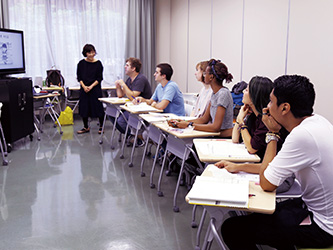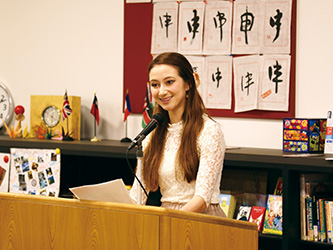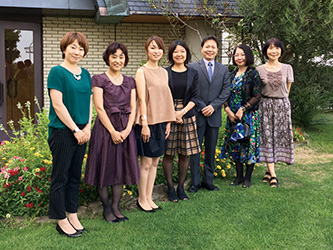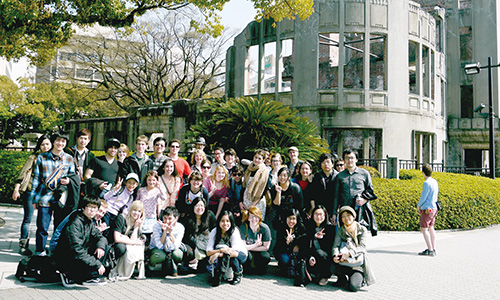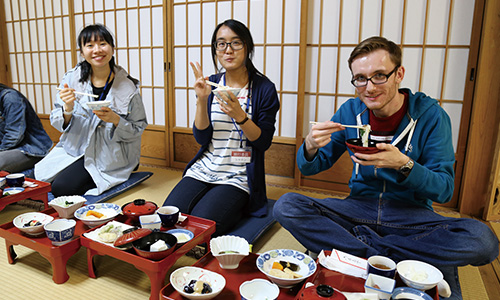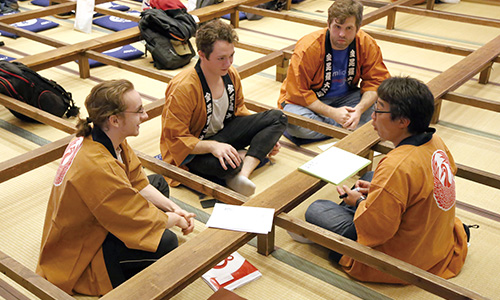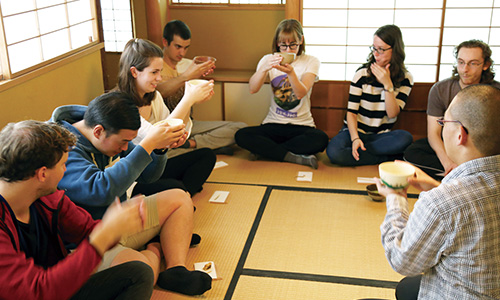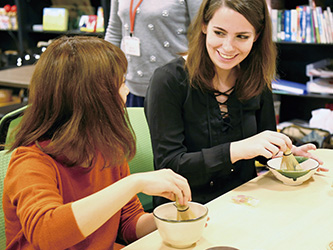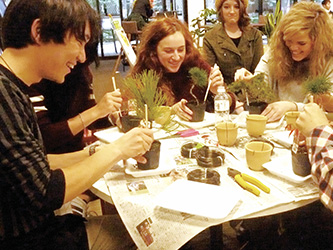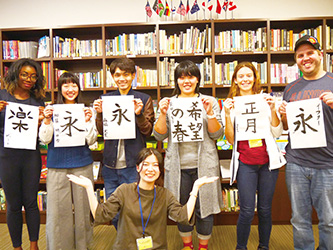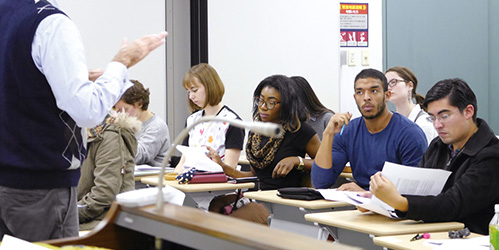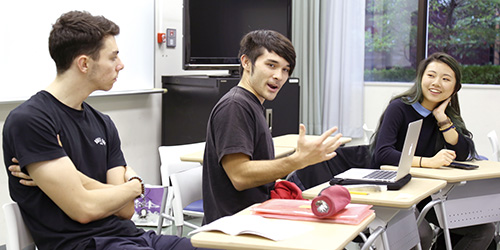Year-in-Japan Program
Curriculum
- Japanese Language Course
- Japan Studies Courses & Others
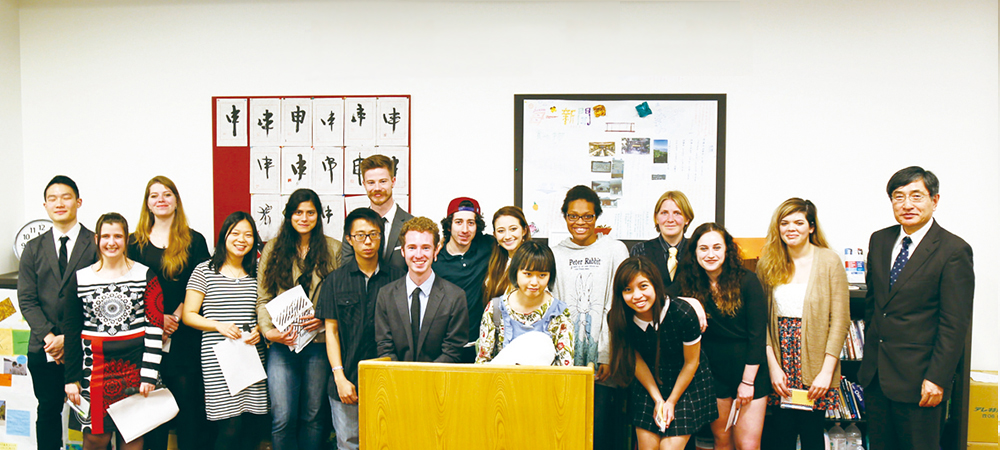
Japanese Language Course
Study Japanese in a program
that works to build your language proficiency through
intensive study and daily use.
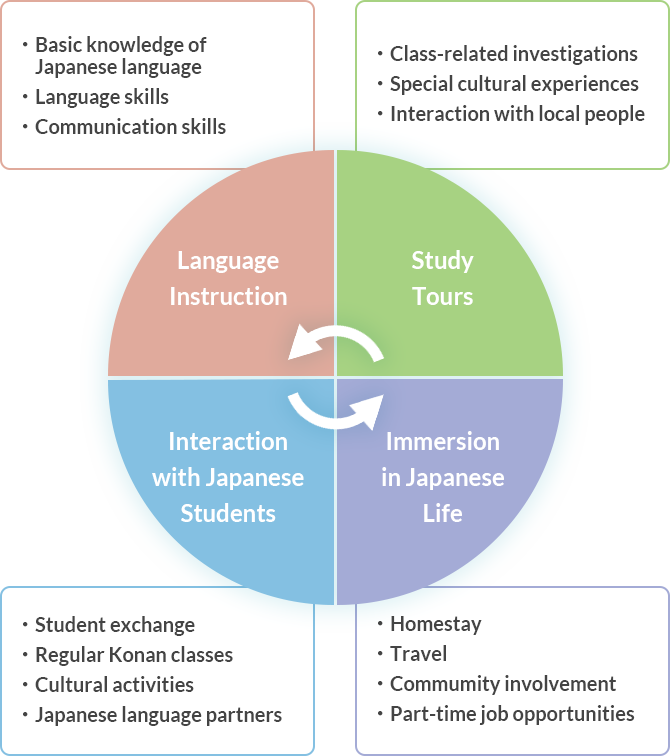
Language classes are kept small to assure the best use of each student’s classroom time. Students are assigned to language levels on the basis of the results of placement tests given soon after their arrival in Japan. Consideration is also given to their previous experience with the language. Every effort is made to place students so that they will not repeat a course level for which they have already been given credit and to ensure that they are placed with others of similar language ability.
- Japanese Language Instruction
-
The Japanese curriculum provides 5 levels of courses suitable for students from beginning to advanced. The size of each class is limited to at most 10 students in order to maximize individualized instruction. Students attend three morning classes in Japanese language, Monday through Thursday (9:00-9:50 / 10:00-10:50 / 11:00-11:50), and two morning classes on Fridays (9:00-9:50 / 10:00-10:50).
At the beginning and pre-intermediate levels, oral performance and the typical interactions that students have in their daily lives in Japan are emphasized. As students progress to intermediate and advanced levels, reading and writing receives increasingly more attention. At the advanced levels, academic discourse is also covered, as students learn to read and write essays and other academic texts.
Subject Level Language Proficiency Goal JAPANESE Ⅰ Beginner* JLPT** N5 Level JAPANESE Ⅱ Pre-Intermediate JLPT** N4 Level JAPANESE Ⅲ Intermediate JLPT** N3 Level JAPANESE Ⅳ Pre-Advanced JLPT** N3~N2 Level JAPANESE Ⅴ Advanced JLPT** N2~N1 Level - * No prior Japanese language experience necessary
- ** Japanese Language Proficiency Test
- Study Tours
-
Among the highlights of the Japanese language course are overnight study tours. Two or three supervised study tours to Koya-san in Wakayama Prefecture, Hiroshima and the island of Miyajima, and other neighboring areas are included throughout the program year as part of the Japanese curriculum.
Each study tour provides exchange students with opportunities to explore western Japan’s unique heritage. The itineraries are carefully planned to offer students a culturally rich and diversified experience of contemporary Japan, while also incorporating traditional activities that are unique to the particular regions visited. Students apply what they have learned in their Japanese language classes in interactions with local community members in each region to learn in-depth about Japan.
- Immersion in Japanese Life
-
The majority of students choose to live with Japanese host families and immerse themselves in daily Japanese life. In the span of the program, students will most likely go shopping at local supermarkets, enjoy home cooking, go to local festivals, and experience seasonal events such as New Year’s and cherry blossom viewing.
Using Japanese as a tool to communicate in these everyday situations combined with active involvement in the community, trips taken during vacations, and part-time jobs helps students see various sides of Japanese society and culture. Students are asked to interview their host families and close acquaintances as a means to facilitate meaningful conversation that is essential as students navigate their way to mastering the Japanese language.
- Interaction with Japanese Students
-
Activities that introduce traditional Japanese culture are held seasonally at the Ajisai Room in Global Zone Porte and are open to both exchange students and Konan students as a meeting place for cultural exchange. A growing number of Konan students who belong to university culture clubs such as the Tea Ceremony and Flower Arrangement club, Calligraphy club and so on, volunteer their time to prepare, demonstrate, and teach students about Japanese culture in Japanese to exchange students.
Konan students who volunteer as Japanese language partners also periodically help exchange students improve language skills by participating as conversation or discussion partners in Japanese language classes. Participants practice target skills through lively interactions with Konan students in a classroom setting.
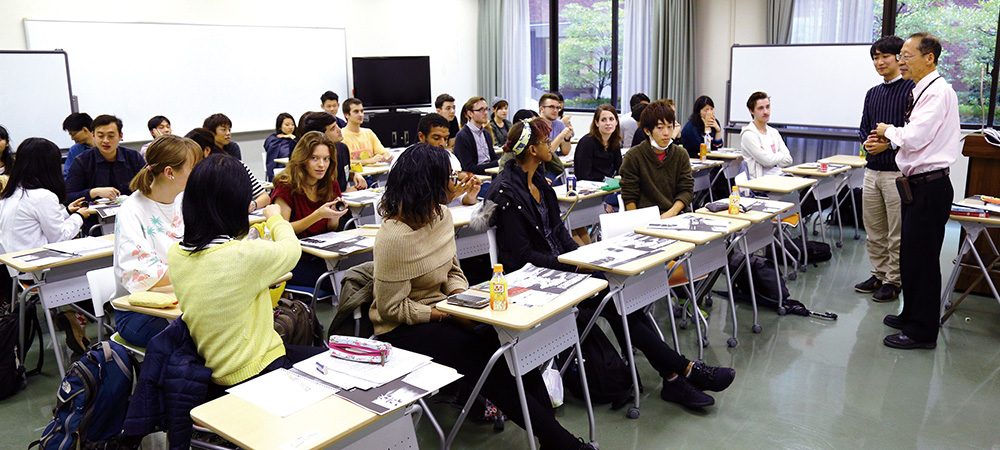
Japan Studies Courses & Others
Enhance your understanding of Japanese culture
by taking courses related to Japan in English.
Japan Studies are elective courses taught in English that focus on subjects related to Japan. Courses include occasional field trips that enhance classroom instruction and deepen the understanding of the course subject. The content of these courses varies somewhat from year to year, depending upon the interests of students, the availability of English-speaking faculty members, and the research specialty of the Resident Director of the Year-in-Japan Program.
Students also have the option of taking a course along with Konan students called Joint Seminar in addition to two Japan Studies courses. This course meets less frequently than other Japan Studies courses and offers opportunities for exchange students and Konan students to meet and share their views about global topics in a classroom setting.
Exchange students with sufficient Japanese language ability and proper faculty approval are eligible to take regular university courses with Konan students that include physical education (PE) classes, and foreign language classes such as German, French, Chinese and Korean. Students should consult with KIEC to determine if classes can be taken for credit or non-credit. A “sit-in” month is also available for some classes offered in the Department of English Literature and Language for students interested in auditing Konan courses.
About Our Programs
-
Year-in-Japan Program
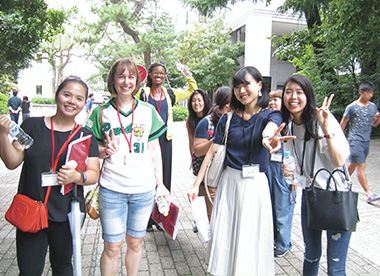
Spend a year immersed
in Japanese language and culture.
It is likely to be one of the most challenging
and exciting years of your life. -
Summer Intensive
Japanese Program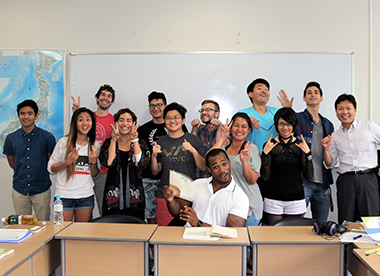
A 6-week intensive Japanese language program
running from June through July. -
Other Programs
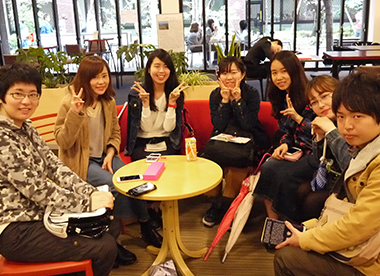
Konan University offers other programs
for students from neighboring countries enrolling
in courses instructed in the Japanese language.

